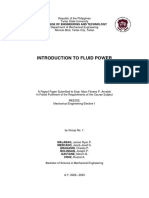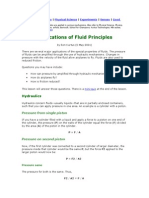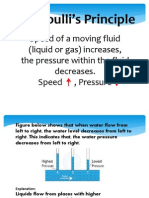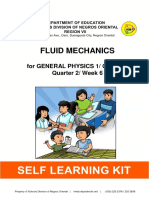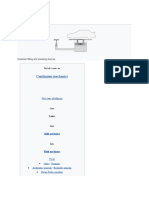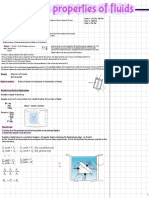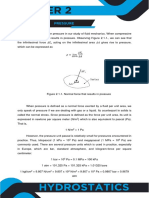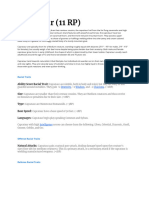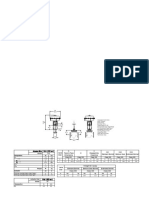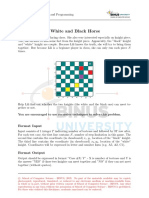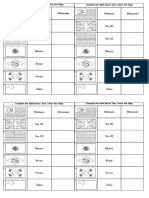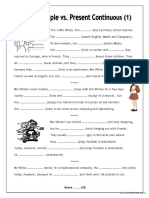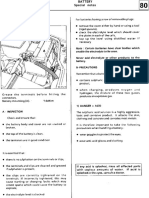Fluids in Motion
Pascal’s Law
Figure 39: Where is Pascal’s Law used by this earth-moving machine?
A French scientist named Blaise Pascal (1623-1662) discovered some important facts about pressure in fluids.
Pascal invented the syringe, and the hydraulic lift. Hydraulic devices use liquids to exert pressure.
Pascal made many important contributions to both science and mathematics. One of these contributions
was his observation about the transmission of pressure in fluids. It is known as Pascal’s Law.
Pascal’s Law: If a fluid is totally confined, and if a change in pressure occurs at any point in the enclosed
fluid, then that change in pressure will be transmitted to every other point in the fluid.
Pascal’s Law is even more important today than it was in the seventeenth century. All kinds of modern
devices use Pascal’s Law. Fluid pressure is used to operate car brakes, power steering, and fuel systems.
Aircraft use fluid pressure to operate many different systems, including brakes, on-ground steering, landing
gear, flaps, ailerons, elevators, rudder, fuel pumping systems, spoilers, and so on. Earth-moving machines use
hydraulic pressure to operate various components. Service stations use fluid pressure to fill tires, operate
various tools, and to lift heavy vehicles so that they can be serviced. Adjustable chairs in hairdresser shops and
dentist offices may be operated using fluid pressure.
Resources available thanks to Gordon R. Gore and the BIG Little Science Centre www.biglittlesciencecentre.org
� Fluids in Motion
The hydraulic lift illustrated in Figure 40
is a very practical application of Pascal’s
Law. A small force exerted on a small
piston can be used to apply a larger force
to lift a heavy load on a larger piston.
In the example, a 1 N force is
applied to a piston with a cross-sectional
area of 1 cm2, so the input pressure is
1 N/cm2.
Figure 40
Pascal’s Law says that the pressure is transmitted undiminished to the larger piston, which has an area of
10 cm2.
Since the area is 10 times as great, and the pressure is the same, then the force must also be 10 times as
Force
great, because Pressure = . In other words, this hydraulic lift would multiply your effort force ten times.
Area
Of course, by varying the areas of the two pistons, you can multiply the effort force as much as you
wish.
With any hydraulic lift, pressure on small piston = pressure on large piston.
Therefore,
small force
=
large force
.
small area large area
Exercises
1. You have used Archimedes’ Principle to explain how the ‘test tube submarine’ works. Now use Pascal’s Law
to further describe exactly what happens when you squeeze the pop bottle with the floating test tube inside.
2. Name at least five devices that are applications of Pascal’s Law.
3. A hydraulic lift has two cylinders. The effort force applied to the smaller cylinder is 5.0 N, and its cross-
sectional area is 1.2 cm2. If the larger cylinder has a cross-sectional area of 120 cm2, what load can be lifted
by the 5.0 N effort force?
4. Design on paper a burglar alarm that uses Pascal’s Law as the basis for its operation.
5. Explain why you were able to lift a heavy book by blowing into a plastic bag spread out below the book.
Fluids in Motion
Water flowing in a river travels at a certain speed down a valley. If the valley becomes narrower, the speed of
the water will increase, because the same volume of water must go through the narrower valley in a given
amount of time. Likewise, if a blast of air is suddenly forced through a small passageway, the speed of the air
will increase. The change in speed of a fluid has a curious effect on the pressure in the fluid. Investigation 8
explores what happens when the speed of a fluid changes.
Resources available thanks to Gordon R. Gore and the BIG Little Science Centre www.biglittlesciencecentre.org
� Fluids in Motion
Investigation 8
How Does Fluid Speed Affect Fluid Pressure?
Problem: How does changing the speed of a fluid affect the pressure in the fluid?
(a) (b)
Figure 41
Procedure
1. Suspend two empty plastic pop bottles by strings, so that they are about 5 cm apart, as in Figure 41(a). (Use
hot glue to attach the bottle caps to the strings.) Predict what will happen when you blow hard between the
two pop bottles. Test your prediction! According to your results, where is air pressure greater?
2. Hold a piece of writing paper in front of your mouth, as in Figure 41(b). Blow hard, straight over the top of
the paper. What happens to the paper? Do the results suggest that air pressure is higher below the paper or
above the paper?
Figure 42 Figure 43
3. Place a ping-pong ball in a freshly washed plastic funnel, as in Figure 42. A clean plastic or rubber tube can
be attached to the funnel. Try to blow the ball out of the funnel! What happens?
4. While blowing through the funnel, turn it upside down and see if you can make the ping pong ball stay in the
funnel when the funnel is upside down.
5. Turn on the tap and obtain a smooth stream of water. Bring the convex side of a spoon near the stream, as in
Figure 43. What happens to the spoon? What is making this happen?
Concluding Questions
1. What effect does increasing the speed of air have on the pressure in the air?
2. Why do you think a ping-pong ball stays in a funnel when you try to blow it out?
3. Explain what happened to the spoon in Procedure 5.
Resources available thanks to Gordon R. Gore and the BIG Little Science Centre www.biglittlesciencecentre.org
� Fluids in Motion
Bernoulli’s Principle
The experiments you did in Investigation 8 illustrate a principle discovered by Daniel Bernoulli (1700-1782).
Bernoulli’s Principle: Where the speed of a fluid is high, the pressure is low,
and where the speed of the fluid is low, the pressure is high.
Bernoulli’s Principle explains many everyday occurrences. Here are some examples:
Passing Transport Trucks
When a large truck passes close to you on the highway, it sometimes feels like your car is being pulled toward
the truck. Air is rushing between the two vehicles, creating a low-pressure area. Higher pressure on the other
side of your car tends to push your car toward the truck.
Clogged Arteries
If the walls of an artery are clogged with plaque, blood has to speed up as it rushes through the constricted part
of the artery. This creates a low-pressure zone. Higher pressure from outside the walls of the artery make the
artery momentarily close down, blocking blood flow. When the flow stops, the Bernoulli effect stops, and the
vessel opens up again. The procedure repeats, causing a ‘fluttering’ action, which a doctor can detect with a
stethoscope. The fluttering sound is an indicator that the patient has a serious problem with plaque lining his or
her arteries.
Perfume Bottles and Garden Sprayers
Figure 44 shows how the Bernoulli effect can be used to spray perfume from
a bottle. When the bulb is squeezed, air rushes at high speed through the
horizontal tube. This creates a low-pressure zone above the vertical tube.
Atmospheric pressure on the surface of the perfume in the bottle pushes the
perfume up the vertical tube into the low-pressure zone. The perfume is
carried out of the horizontal tube onto the person wearing it. Similar devices
are used to spray paint, liquid fertilizers, weed killers and other garden
chemicals. Instead of a squeeze bulb to produce a blast of high-speed air,
some devices use running water from a hose attached directly to them.
Figure 44
Baseball Curve Balls
Figure 45
Resources available thanks to Gordon R. Gore and the BIG Little Science Centre www.biglittlesciencecentre.org
� Fluids in Motion
In Figure 45, a baseball is moving from left to right. It has been thrown with a spin to it. You are looking down
at the baseball. Imagine the baseball is stationary, and the air is moving from right to left on the page. (This
makes the explanation simpler.) At the top of the diagram, air is moving to the left, and the ball is spinning
toward the air. The air is slowed down by friction between the rough surface of the ball and the air going by it.
This slowing down of the air creates a zone of relatively higher pressure.
At the bottom of the ball on the diagram, air is moving to the left, and so is the ball. The speed of the air
near the bottom of the ball is higher than the speed of air near the top of the ball. Therefore, air pressure is
lower at the bottom of the diagram.
The difference in air pressures results in the ball being pushed down on the diagram. From the point of
view of the pitcher, the ball will curve to the right.
Bernoulli’s Principle can be used to explain other effects that are seen in sports. A golf ball will ‘hook’
(curl to the left, if you are a right-handed golfer) or ‘slice’ (curl to the right if you are a right-handed golfer),
depending on the kind of spin imparted to the ball when it is struck. In table tennis, overspin imparted to the ball
will make the ball seem to dive more quickly over the net.
Lift on an Aircraft Wing
One of the reasons there is lift on an airplane
wing is its typical airfoil shape, as in Figure
46. This shape, and the angle the wing makes
with the direction of travel, forces air above
the wing to move faster than air moving below
the wing. This results in lower pressure above
the wing than below. The difference in
pressure results in a net upward pressure. The
upward force due to this net upward pressure
is called lift. When the lift force equals the
force of gravity, flight becomes possible!
Figure 46
Exercises
1. A very high wind during a hurricane or tornado may lift the roof off a house, and yet do little other damage.
Explain how this might happen, in terms of Bernoulli’s Principle.
2. A wind is blowing across the top of a fireplace chimney. How will this affect the circulation of air into and
up the chimney?
3. In golf, the ball is often given a lot of ‘backspin’. This means that the bottom of the ball is spinning in the
direction of travel of the ball. How will this affect the flight of the ball? Will it tend to go higher or lower
than if it had no spin at all?
4. How will a strong headwind affect the flight of a golf ball that has ‘backspin’?
5. What sort of spin must a pitcher put on a baseball to produce a ‘drop ball’?
Resources available thanks to Gordon R. Gore and the BIG Little Science Centre www.biglittlesciencecentre.org












